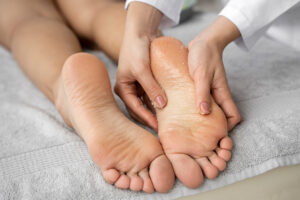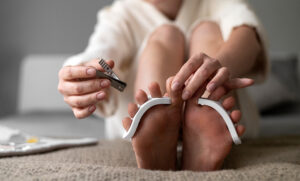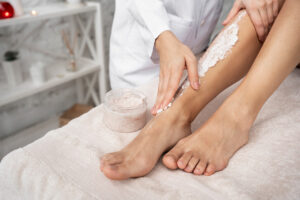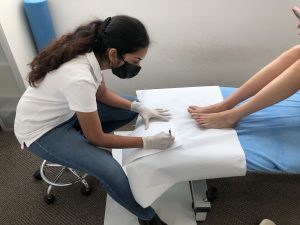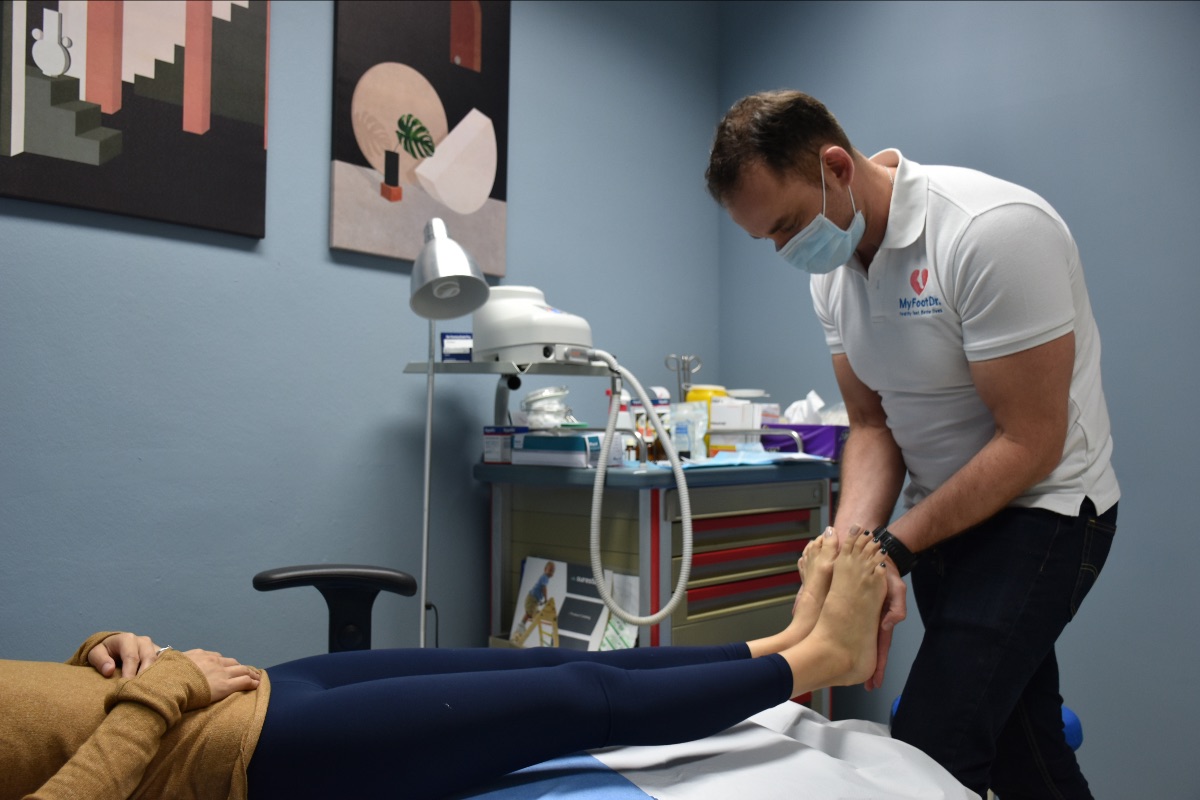
In the life of a busy professional, foot care might not always top the list of priorities. However, given the extensive demands we place on our feet daily, it’s essential to adopt a comprehensive foot care routine to prevent discomfort and maintain overall foot health. This article will explore practical foot care strategies that fit seamlessly into a busy lifestyle, drawing insights from reputable sources and recent studies.
Understanding the Importance of Foot Care
Our feet are marvels of engineering, supporting our body’s weight, enabling mobility, and absorbing the shocks of daily activities. Neglecting foot care can lead to discomfort, infections, and conditions that could hinder our daily routines. According to the CDC, maintaining clean, dry feet and proper nail hygiene can prevent many common foot problems (1).
Starting a Foot Care Routine
A simple yet effective foot care routine can significantly impact your foot health. This routine should include daily washing, thorough drying (especially between the toes), moisturizing, and regular nail trimming. It’s crucial to incorporate foot care into your daily hygiene regimen to prevent issues like athlete’s foot, toenail fungus, and cracked heels.
Choosing the Right Footwear
One of the most critical aspects of foot care is selecting appropriate footwear. Shoes that fit well and provide adequate support are essential to prevent a myriad of foot problems. It’s advisable to choose shoes that accommodate the shape of your foot, offering enough room for the toes, and providing sufficient arch support. Additionally, alternating between different pairs of shoes allows them to air out, effectively reducing the risk of fungal infections.
The Role of Moisturizers and Foot Creams
Moisturizing plays a crucial role in preventing cracks and keeping the skin on your feet supple. For effective hydration, it is recommended to use foot creams that contain ingredients such as urea, lactic acid, or glycerin. Applying moisturizer right after bathing can help lock in moisture, ensuring that your feet stay soft and free from dryness.
Foot Hygiene and Health
Good foot hygiene is foundational to maintaining healthy feet and ensuring their well-being. Establishing a daily routine of washing your feet with soap and warm water is essential for removing dirt and preventing bacterial and fungal growth. It’s equally important to thoroughly dry your feet after washing, especially between the toes, to thwart the development of athlete’s foot and other skin conditions. Adding antifungal powders to your regimen can be a proactive measure against common fungal infections, offering an additional layer of protection.
Regular inspections of your feet are a critical aspect of foot health, allowing for the early detection of potential issues such as infections, injuries, or abnormalities. This vigilant approach enables prompt intervention, which can be key in preventing minor problems from escalating into more serious conditions. Monitoring for changes in color, texture, or appearance, as well as noting any pain or unusual sensations, should be part of your foot care routine
Professional Care and Pedicures
While self-care practices play a critical role in foot health, seeking professional care, such as routine podiatrist visits or indulging in pedicures, contributes significantly to overall foot well-being. Nonetheless, caution is advised with certain treatments. Fish pedicures, a popular spa service where fish gently remove dead skin, have been associated with infections due to bacteria such as Mycobacterium marinum and Methicillin-resistant Staphylococcus aureus (MRSA).(2) The risks of zoonotic diseases from the fish utilized in these treatments underline the need for stringent sanitation practices and adherence to regulatory guidelines in spa environments.
When to Seek Professional Help
While many foot problems can be managed with good care and hygiene, certain conditions require professional attention. Persistent pain, severe cracking, or signs of infection are indicators that it’s time to consult a podiatrist. Early intervention can prevent complications and ensure that you remain on your feet, fulfilling your daily responsibilities without discomfort.
Lifestyle Considerations
To improve your foot health, adding foot-strengthening exercises to your daily routine is important. These activities not only fortify the muscles, tendons, and ligaments of the feet but also enhance their functionality and resilience. Equally important is the maintenance of a healthy weight. Excessive weight places undue stress on your feet, leading to a myriad of issues ranging from chronic pain to decreased mobility. Thus, managing your weight through a balanced diet and regular exercise is essential for the well-being of your feet.
Adequate nutrition plays a crucial role in foot health as well. Ensuring your diet is rich in vitamins and minerals supports the healing and maintenance of foot tissues, while also bolstering bone strength and integrity. Calcium and vitamin D, for instance, are essential for bone health, reducing the risk of fractures and other bone-related issues in the feet.
Moreover, activities that enhance circulation and flexibility are invaluable for not just your feet but your overall health. Regular engagement in walking, swimming, or yoga can significantly benefit the feet by improving blood flow, which in turn facilitates the repair and maintenance of foot tissues. These activities also improve flexibility, reducing the risk of injuries and enhancing the range of motion. Yoga, in particular, with its emphasis on balance and strength, can be incredibly beneficial for the feet, as it encourages the engagement of muscles that might not be utilized in other forms of exercise.
The Risks of Neglect
Ignoring foot care can lead to a range of problems, some of which can significantly impact your quality of life. Conditions such as methicillin-resistant Staphylococcus aureus (MRSA) infections can arise from seemingly harmless sources like fish pedicures . Moreover, everyday issues like dry skin and ingrown toenails can escalate into more severe infections if left untreated.
Foot care should not be overlooked, even in the busiest schedules. Integrating simple practices into your daily routine, choosing the right footwear, and staying vigilant about foot hygiene can make a significant difference in your foot health. Remember, healthy feet are foundational to a healthy, active lifestyle. By taking proactive steps today, you can ensure your feet remain in top condition, supporting your professional and personal endeavors every step of the way.
Taking care of your feet is an investment in your overall health and well-being. By following these guidelines and seeking professional advice when necessary, you can maintain healthy feet and continue to navigate your busy life with confidence and comfort.
References
- Centers for Disease Control and Prevention. Foot Hygiene. June 15, 2022. https://www.cdc.gov/hygiene/personal-hygiene/feet.html
Methicillin-resistant Staphylococcus aureus foot infection after fish pedicure Sugimoto K, Frei R, Graber P. Infection. 2013 Oct;41(5):1013-5. doi: 10.1007/s15010-013-0437-8.

